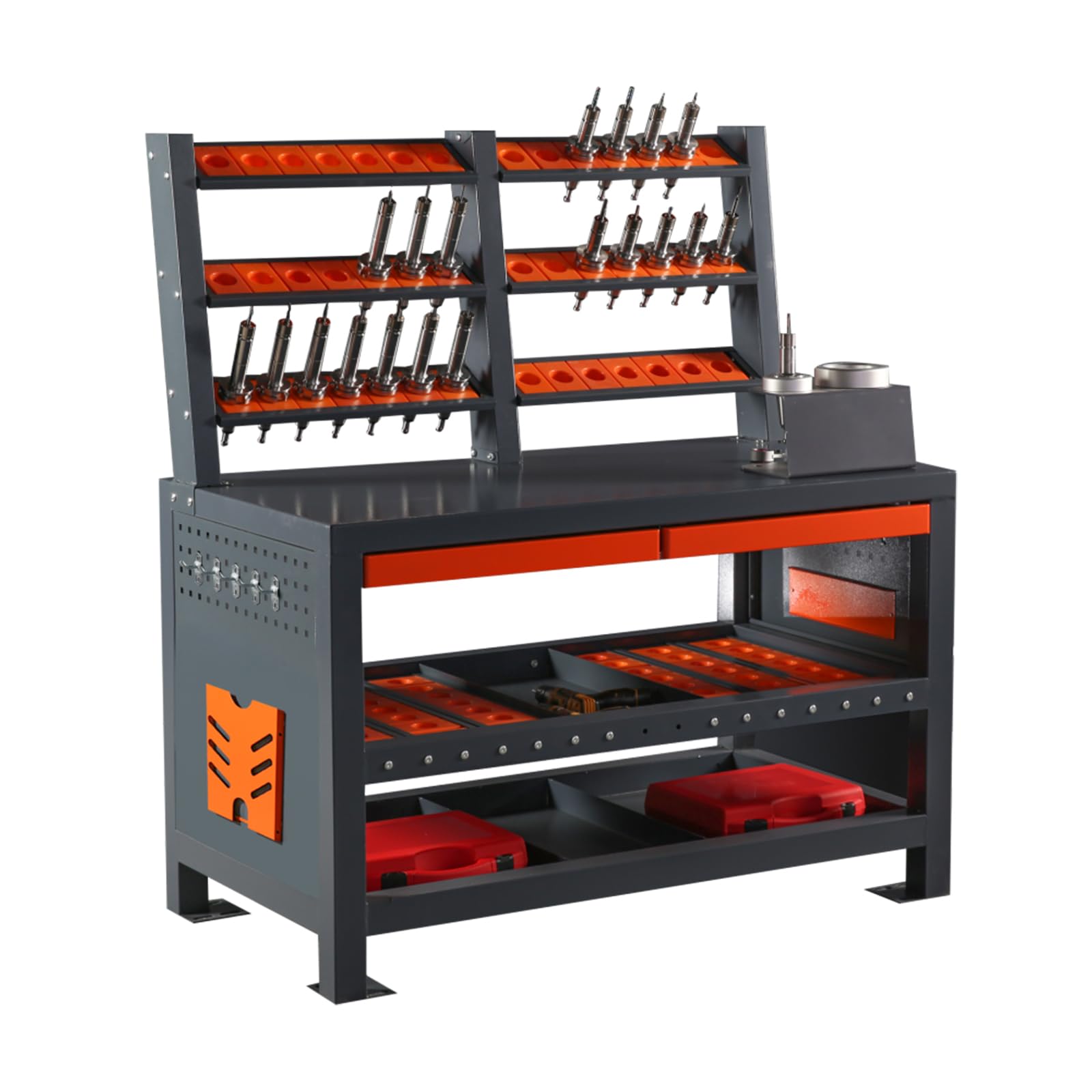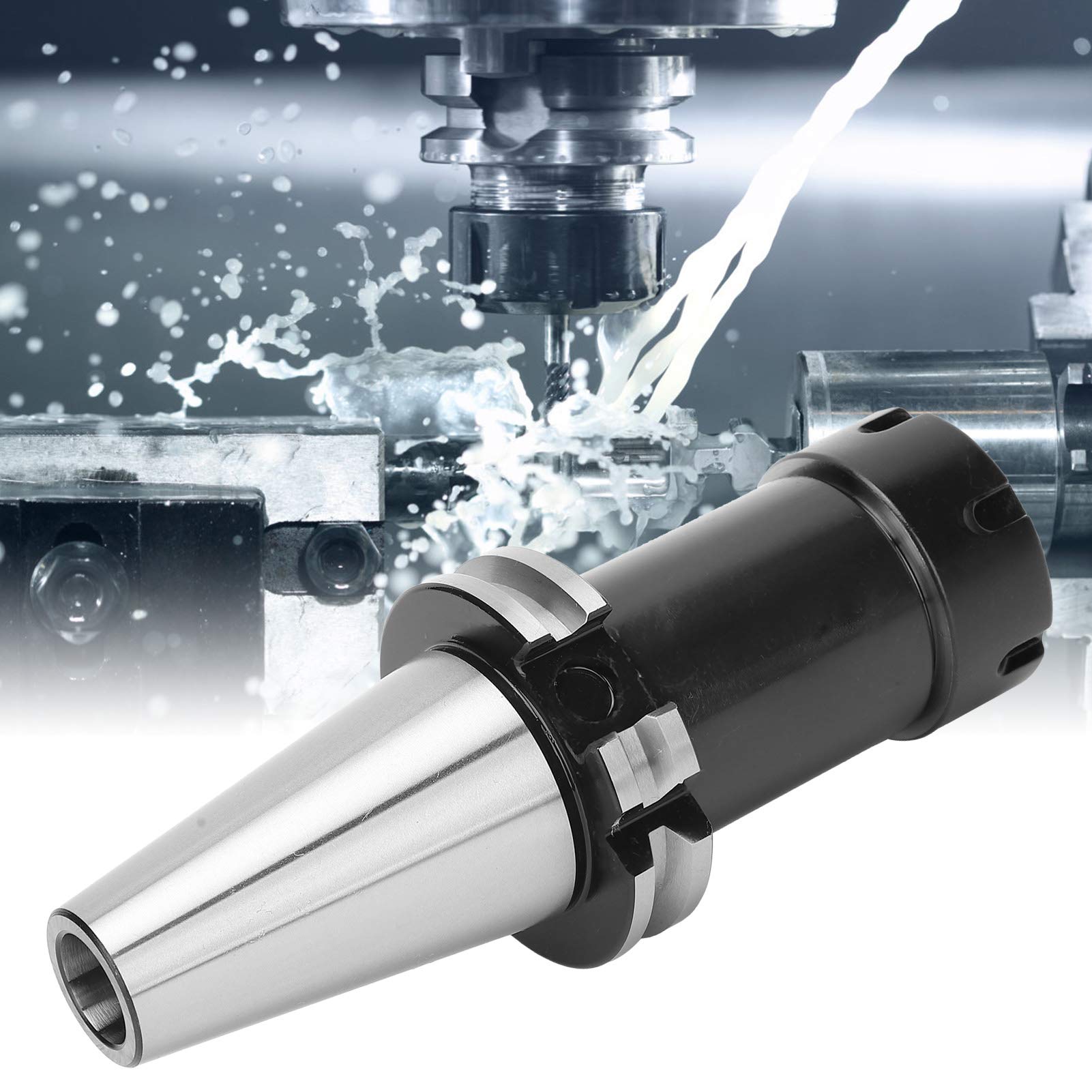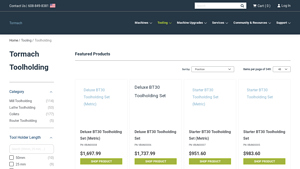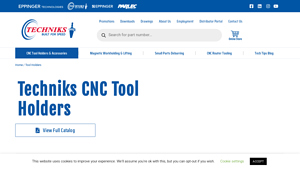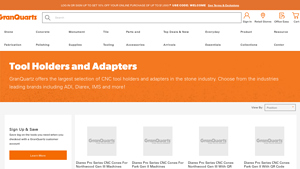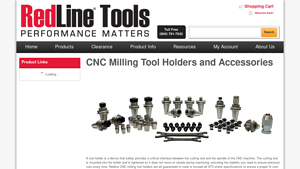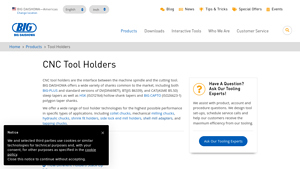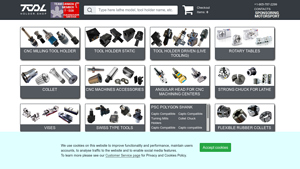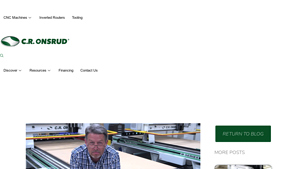Introduction: Navigating the Global Market for cnc machine tool holder
In today’s competitive manufacturing landscape, sourcing the right CNC machine tool holder can significantly impact operational efficiency and product quality. With the global market expanding, international B2B buyers face the challenge of navigating a diverse range of options and suppliers. This guide provides a comprehensive overview of CNC machine tool holders, covering various types, their applications in different industries, and essential factors for supplier vetting. Additionally, it addresses critical considerations such as pricing, performance standards, and the latest technological advancements.
For businesses in regions like Africa, South America, the Middle East, and Europe—countries such as Nigeria and Brazil—understanding the nuances of this market is vital. This guide empowers buyers to make informed purchasing decisions by equipping them with actionable insights and best practices tailored to their specific needs. Whether you are looking to enhance machining precision, reduce downtime, or improve tool longevity, this resource serves as a valuable tool for ensuring your investment aligns with your operational goals. By leveraging the information within, you can confidently navigate the complexities of the CNC machine tool holder market and secure the best solutions for your business.
Understanding cnc machine tool holder Types and Variations
| Type Name | Key Distinguishing Features | Primary B2B Applications | Brief Pros & Cons for Buyers |
|---|---|---|---|
| Collet Chucks | High precision, versatile clamping, multiple sizes | Milling, drilling, tapping | Pros: Excellent grip, minimal run-out; Cons: Limited holding power for larger tools. |
| Hydraulic Tool Holders | High clamping force, vibration absorption, repeatable accuracy | Precision machining, high-speed applications | Pros: Superior tool life, reduced tool wear; Cons: Generally higher cost. |
| Shrink Fit Holders | Thermal expansion for secure tool holding, minimal run-out | High-speed milling, precision jobs | Pros: Exceptional balance, high accuracy; Cons: Requires specialized equipment for setup. |
| End Mill Holders | Designed for end mills, various taper sizes | General machining, milling | Pros: Easy to use, cost-effective; Cons: May not support heavy cutting conditions. |
| Face Mill Arbors | Compatible with face mills, robust construction | Heavy-duty milling operations | Pros: Strong and stable, ideal for large cuts; Cons: Bulkier, may require additional setup time. |
What are the characteristics of Collet Chucks in CNC machining?
Collet chucks are renowned for their precision and versatility. They can accommodate various tool sizes and are ideal for applications that require high accuracy, such as milling and drilling. Their design allows for quick tool changes, making them suitable for operations that demand efficiency. When considering collet chucks, buyers should focus on the clamping range and the precision tolerance, as these factors directly influence machining performance.
How do Hydraulic Tool Holders enhance machining operations?
Hydraulic tool holders are engineered to provide exceptional clamping force and vibration absorption, which are crucial in high-speed and precision machining applications. They maintain repeatable accuracy, ensuring that the tool position remains consistent throughout the machining process. Buyers should evaluate the clamping pressure specifications and the compatibility with their CNC machines to maximize the benefits of hydraulic holders.
What makes Shrink Fit Holders a preferred choice for precision jobs?
Shrink fit holders utilize thermal expansion to securely hold tools, offering minimal run-out and exceptional balance. This technology is particularly beneficial in high-speed milling and precision applications where accuracy is paramount. However, the need for specialized equipment to heat and cool the holders can be a consideration for buyers. Evaluating the operational costs and the required setup can help in determining the suitability of shrink fit holders for specific projects.
What are the advantages of using End Mill Holders in CNC machining?
End mill holders are specifically designed to accommodate end mills, making them a common choice for general machining tasks. They offer ease of use and are cost-effective, making them accessible for various applications. However, they may not be suitable for heavy cutting conditions where higher clamping power is needed. Buyers should assess the compatibility of end mill holders with their tooling and the anticipated cutting forces in their operations.
Why are Face Mill Arbors essential for heavy-duty milling operations?
Face mill arbors are robust tool holders designed to work with face mills, providing stability and strength for heavy-duty milling tasks. Their construction supports large cutting forces, making them ideal for machining operations that require aggressive material removal. While they offer significant performance advantages, the bulkiness of face mill arbors may require additional setup time and considerations regarding space and tooling compatibility. Buyers should ensure that their CNC machines can accommodate these tool holders effectively.
Key Industrial Applications of cnc machine tool holder
| Industry/Sector | Specific Application of CNC Machine Tool Holder | Value/Benefit for the Business | Key Sourcing Considerations for this Application |
|---|---|---|---|
| Aerospace | Precision machining of aircraft components | Enhanced accuracy and reduced waste | Certification standards, material quality, lead times |
| Automotive | Production of engine parts and transmission systems | Improved efficiency and consistency | Compatibility with existing machinery, tooling flexibility |
| Medical Devices | Manufacturing of surgical instruments and implants | High precision and regulatory compliance | Biocompatibility, surface finish requirements, traceability |
| Oil & Gas | Drilling and maintenance of extraction equipment | Durability under extreme conditions | Resistance to corrosion, availability of spare parts |
| Mold & Die | Creation of molds for various products | Cost-effective production and longevity | Customization options, delivery timelines, support services |
How is CNC Machine Tool Holder Used in Aerospace Manufacturing?
In the aerospace industry, CNC machine tool holders are crucial for precision machining of complex aircraft components. These holders ensure that cutting tools maintain tight tolerances, which is essential for safety and performance. Buyers in this sector must prioritize certified tool holders that comply with stringent aerospace standards. The right tool holder can significantly reduce material waste and improve machining efficiency, ultimately leading to cost savings.
What Role Does CNC Machine Tool Holder Play in Automotive Production?
In automotive manufacturing, CNC machine tool holders are used to produce critical engine parts and transmission systems. These holders enhance the efficiency and consistency of machining operations, leading to faster production cycles. International buyers, particularly from regions like Africa and South America, should focus on sourcing holders that are compatible with their existing machinery to ensure seamless integration. Additionally, flexibility in tooling options allows for adaptation to various production needs.
How is CNC Machine Tool Holder Essential for Medical Device Manufacturing?
The medical device industry relies heavily on CNC machine tool holders for the manufacturing of surgical instruments and implants, where precision is non-negotiable. These holders help achieve the high accuracy required for regulatory compliance and patient safety. Buyers must consider biocompatibility and surface finish requirements when sourcing tool holders, as these factors directly impact the quality of medical products. Traceability of materials used in the holders is also a critical concern for compliance with health regulations.
Why is CNC Machine Tool Holder Important in Oil & Gas Sector?
In the oil and gas sector, CNC machine tool holders are essential for the drilling and maintenance of extraction equipment. These holders must withstand extreme conditions, including high pressures and corrosive environments. Businesses should prioritize sourcing holders made from durable materials that resist corrosion to ensure longevity and reliability. Availability of spare parts is also a vital consideration, as downtime can be costly in this industry.
How Does CNC Machine Tool Holder Facilitate Mold & Die Production?
CNC machine tool holders are integral to mold and die manufacturing, enabling the precise creation of molds used in various products. They facilitate cost-effective production by allowing for quick changes in tooling setups, which is essential for meeting diverse client needs. Buyers should look for customization options in tool holders to tailor them for specific applications. Delivery timelines and support services are also important factors to consider, as they affect overall production efficiency.
3 Common User Pain Points for ‘cnc machine tool holder’ & Their Solutions
Scenario 1: Difficulty in Maintaining Tool Holder Precision
The Problem:
B2B buyers often face significant challenges with maintaining the precision of CNC machine tool holders. Inconsistent tool holder performance can lead to increased wear on cutting tools, reduced machining accuracy, and ultimately, costly production delays. This issue is especially pronounced in industries like automotive or aerospace, where precision is paramount. When tool holders are not properly calibrated or maintained, even minor deviations can result in defective parts, leading to expensive rework or scrap.
The Solution:
To combat precision issues, implement a rigorous tool holder inspection and maintenance routine. Begin by establishing a set schedule for checking the runout of tool holders using a dial indicator. This will help identify any deviations early on. Additionally, invest in high-quality tool holders that offer superior clamping forces and better runout tolerances, such as those certified by reputable manufacturers. When selecting tool holders, prioritize options with features like balanced designs and specialized coatings that enhance performance and longevity. Ensure that your operators are trained on proper installation techniques to maximize the tool holder’s effectiveness. Finally, consider incorporating a tool management system that tracks usage and maintenance history, allowing for proactive replacements and adjustments.
Scenario 2: Lack of Compatibility with Existing Equipment
The Problem:
Many B2B buyers experience frustration when new CNC machine tool holders are not compatible with their existing machinery. This compatibility issue can stem from differences in spindle sizes, shank types, or taper designs, leading to increased downtime as businesses scramble to find suitable adapters or alternative solutions. Such compatibility mismatches not only hinder productivity but can also compromise the safety and integrity of machining operations.
The Solution:
To avoid compatibility issues, conduct thorough research before purchasing new tool holders. Start by consulting the specifications of your existing CNC machines to determine the exact requirements for tool holders, including spindle types and taper sizes. When evaluating suppliers, look for manufacturers that offer a wide range of tool holders with compatibility guarantees or extensive documentation regarding their products’ specifications. It is also beneficial to work with suppliers who provide customization options or tailored solutions, allowing you to modify tool holders to fit your specific machinery. Establishing a strong relationship with your suppliers can ensure you receive ongoing support and advice regarding tool holder compatibility.
Scenario 3: High Costs Associated with Tool Holder Wear and Tear
The Problem:
B2B buyers in manufacturing frequently grapple with the high costs associated with tool holder wear and tear. Over time, worn tool holders can lead to subpar machining results, necessitating frequent replacements that strain budgets. The financial impact extends beyond the cost of new tool holders; it includes lost productivity and increased labor costs for setup and adjustments. For companies operating on tight margins, these expenses can be particularly burdensome.
The Solution:
To mitigate the costs of tool holder wear, it is essential to focus on quality and proper usage. Invest in high-performance tool holders that are designed for longevity and durability, such as those made from advanced materials that withstand wear better than standard options. Implementing a preventative maintenance program that includes regular cleaning and inspection of tool holders can extend their lifespan significantly. Additionally, training operators on optimal cutting speeds and feeds can reduce the stress placed on tool holders during operation, thereby minimizing wear. Consider using advanced monitoring technologies that provide real-time data on tool performance, allowing for timely interventions before wear leads to costly failures. By prioritizing quality and maintenance, you can achieve significant cost savings over time.
Strategic Material Selection Guide for cnc machine tool holder
When selecting materials for CNC machine tool holders, it is essential to consider the specific properties, advantages, and limitations of each material. This analysis focuses on four common materials: steel, aluminum, titanium, and polymer composites. Each material has distinct characteristics that can significantly impact performance, durability, and cost, making them suitable for various applications.
What Are the Key Properties of Steel for CNC Machine Tool Holders?
Steel is the most widely used material for CNC tool holders due to its excellent strength and durability. High-carbon steel and tool steel variants are particularly favored for their high-temperature resistance and ability to withstand significant pressure. Steel tool holders can typically endure temperatures up to 600°F (315°C) without losing structural integrity, making them suitable for high-speed machining applications.
Pros: Steel tool holders are highly durable, resistant to wear, and can be manufactured with precise tolerances. They are also relatively cost-effective compared to other materials, making them a popular choice for many manufacturers.
Cons: The primary drawback of steel is its weight, which can affect machine dynamics and increase wear on CNC machines. Additionally, steel can be prone to corrosion if not properly treated or coated.
How Does Aluminum Compare for CNC Tool Holders?
Aluminum is recognized for its lightweight properties, making it an attractive option for applications where reducing weight is crucial. Aluminum tool holders can handle moderate temperatures and pressures, typically up to 400°F (204°C). They also exhibit good corrosion resistance, which is beneficial in humid or chemically aggressive environments.
Pros: The main advantage of aluminum is its light weight, which can enhance machine efficiency and reduce energy consumption. Aluminum also offers good machinability, allowing for complex designs and faster production times.
Cons: However, aluminum’s lower strength compared to steel limits its use in high-stress applications. It is generally more expensive than steel, which can impact budget considerations for large-scale operations.
What Are the Benefits of Using Titanium for CNC Tool Holders?
Titanium is known for its exceptional strength-to-weight ratio and superior corrosion resistance, making it ideal for demanding applications in aerospace and medical industries. Titanium tool holders can withstand high temperatures, often exceeding 800°F (427°C), and maintain their integrity under extreme conditions.
Pros: The primary advantage of titanium is its lightweight nature combined with high strength, which allows for precise machining without the risk of tool holder deformation. Its corrosion resistance also extends tool life significantly.
Cons: The major limitation of titanium is its high cost and complexity in manufacturing. Titanium requires specialized machining techniques, which can increase production lead times and costs.
Are Polymer Composites a Viable Option for CNC Tool Holders?
Polymer composites are increasingly being used in CNC applications due to their unique properties. These materials are lightweight, resistant to corrosion, and can handle moderate temperatures. They are particularly useful in applications where vibration dampening is critical.
Pros: Polymer composites offer excellent vibration absorption, which can improve machining accuracy and surface finish. They are also resistant to chemical corrosion, making them suitable for various environments.
Cons: However, polymer composites generally have lower strength compared to metals, limiting their use in high-stress applications. They also have a lower temperature tolerance, which can restrict their use in high-speed machining scenarios.
Summary of Material Selection for CNC Machine Tool Holders
| Material | Typical Use Case for cnc machine tool holder | Key Advantage | Key Disadvantage/Limitation | Relative Cost (Low/Med/High) |
|---|---|---|---|---|
| Steel | General machining applications | High durability and wear resistance | Heavy and prone to corrosion | Low |
| Aluminum | Lightweight applications | Reduces machine load and energy usage | Lower strength and higher cost | Medium |
| Titanium | Aerospace and medical applications | Exceptional strength-to-weight ratio | High cost and complex manufacturing | High |
| Polymer Composites | Vibration-sensitive applications | Excellent vibration dampening | Lower strength and temperature tolerance | Medium |
This guide provides a comprehensive overview of material selection for CNC machine tool holders, enabling international B2B buyers to make informed decisions based on their specific application needs and budget constraints.
In-depth Look: Manufacturing Processes and Quality Assurance for cnc machine tool holder
What Are the Key Stages in the Manufacturing Process of CNC Machine Tool Holders?
The manufacturing process of CNC machine tool holders involves several critical stages that ensure the final product meets industry standards and performance expectations. Understanding these stages can help B2B buyers evaluate potential suppliers effectively.
Material Preparation: What Materials Are Used and How Are They Processed?
The initial stage of manufacturing CNC tool holders begins with the selection of high-quality materials, typically including alloy steels and tool steels known for their durability and resistance to wear. These materials are often sourced from reputable suppliers to ensure consistency in quality.
Once the materials are selected, they undergo various preparatory processes, including cutting, grinding, and heat treatment. Heat treatment is particularly crucial as it enhances the mechanical properties of the steel, improving hardness and toughness. Additionally, surface treatments such as nitriding may be applied to further increase wear resistance.
How Are CNC Machine Tool Holders Formed?
The forming stage involves shaping the prepared materials into the desired tool holder design. This is primarily achieved through machining processes such as turning, milling, and drilling. Advanced CNC machines ensure precision during these operations, allowing for tight tolerances that are essential for performance.
In some cases, manufacturers may also employ techniques such as forging or casting, depending on the complexity and volume of the parts being produced. Forged components typically offer improved strength and structural integrity, while casting allows for more intricate designs.
What Assembly Processes Are Involved in CNC Tool Holder Manufacturing?
Following the formation of individual components, the next stage is assembly. This process might involve the integration of various parts, such as collets, nuts, and retention knobs, into the final tool holder assembly. Manufacturers often utilize automated assembly lines to enhance efficiency and consistency.
Attention to detail is vital during assembly to ensure that all components fit precisely. Any misalignment can lead to operational issues, which is why manufacturers often conduct preliminary inspections at this stage.
What Finishing Techniques Are Commonly Used for CNC Tool Holders?
The finishing stage is where the tool holders are prepared for market release. This typically includes processes such as polishing, coating, and marking. Polishing enhances the aesthetic appeal and can reduce friction during operation, while coatings—such as titanium nitride or chrome plating—provide additional protection against wear and corrosion.
Marking is also essential, as it often includes critical information such as model numbers, dimensions, and compliance marks. This information is vital for both operational use and regulatory compliance.
How Is Quality Assurance Implemented Throughout the Manufacturing Process?
Quality assurance (QA) is a cornerstone of the manufacturing process for CNC machine tool holders. Ensuring product quality not only meets customer expectations but also complies with international standards.
What International Standards Should Buyers Be Aware Of?
For B2B buyers, understanding the relevant international standards is crucial. ISO 9001 is a widely recognized standard that outlines the requirements for a quality management system. Suppliers who are ISO 9001 certified demonstrate their commitment to quality and continuous improvement.
Additionally, industry-specific certifications such as CE marking for European markets and API standards for oil and gas applications can be important indicators of a supplier’s credibility and the reliability of their products.
What Are the Key Quality Control Checkpoints?
Quality control (QC) is integrated into multiple stages of the manufacturing process. Key checkpoints include:
-
Incoming Quality Control (IQC): This phase involves inspecting raw materials upon arrival to ensure they meet specified requirements.
-
In-Process Quality Control (IPQC): During production, manufacturers conduct regular checks to monitor critical parameters such as dimensions, hardness, and surface finish. This helps catch any deviations early in the process.
-
Final Quality Control (FQC): Before products are shipped, a final inspection is performed. This may include functional testing and dimensional checks to confirm that the tool holders perform as intended.
What Testing Methods Are Commonly Used in Quality Assurance?
Common testing methods include dimensional inspection using coordinate measuring machines (CMM), hardness testing, and run-out testing to ensure precision in the tool holder’s operation. Some manufacturers may also employ non-destructive testing (NDT) methods to detect internal defects without damaging the product.
How Can B2B Buyers Verify Supplier Quality Control Processes?
For international B2B buyers, it is essential to verify the quality control processes of potential suppliers. Here are several ways to achieve this:
-
Supplier Audits: Conducting regular audits of suppliers can provide insight into their manufacturing and QC processes. This includes checking compliance with international standards and assessing the effectiveness of their quality management systems.
-
Requesting Quality Reports: Buyers should ask for documented quality assurance reports, including results from IQC, IPQC, and FQC. These documents can provide transparency regarding the supplier’s adherence to quality standards.
-
Third-Party Inspections: Engaging third-party inspection services can offer an independent assessment of the supplier’s quality control measures. This is particularly useful for buyers in regions like Africa or South America, where local regulations may vary significantly.
What QC and Certification Nuances Should International Buyers Consider?
International buyers must be aware of varying regulations and standards across regions. For instance, CE marking is essential for products sold in the European Union, while certain certifications may be mandatory for markets in the Middle East or Africa.
Understanding these nuances helps buyers make informed decisions and ensures compliance with local laws, reducing the risk of costly delays or penalties.
Conclusion: Ensuring Quality in Your CNC Tool Holder Supply Chain
In summary, the manufacturing processes and quality assurance measures for CNC machine tool holders are critical to ensuring product reliability and performance. By understanding the stages of manufacturing, quality control checkpoints, and international standards, B2B buyers can make informed choices when selecting suppliers. This knowledge not only enhances the procurement process but also contributes to the overall success of their operations.
Practical Sourcing Guide: A Step-by-Step Checklist for ‘cnc machine tool holder’
Introduction
This guide serves as a comprehensive checklist for B2B buyers seeking to procure CNC machine tool holders. Whether you are sourcing for a manufacturing facility in Africa, South America, the Middle East, or Europe, following these steps will help ensure that you select the right products that meet your operational needs and standards.
1. Define Your Technical Specifications
Before you begin sourcing, it’s essential to establish clear technical requirements for your CNC machine tool holders. Consider factors such as the type of machining operations (milling, drilling, etc.), required precision, and compatibility with existing machinery. This clarity will guide your search and help prevent costly mistakes.
2. Research Potential Suppliers
Conduct thorough research to identify potential suppliers that specialize in CNC tool holders. Utilize online platforms, industry directories, and trade shows to compile a list of manufacturers. Focus on suppliers with a strong reputation in your target markets, as this often correlates with product quality and reliability.
3. Evaluate Supplier Certifications
Verify the certifications of your shortlisted suppliers to ensure they adhere to international quality standards. Look for ISO certifications or any other relevant industry-specific qualifications. This step is crucial as it reflects the supplier’s commitment to quality and can significantly impact the performance of the tool holders.
4. Request Product Samples
Once you have identified potential suppliers, request samples of the CNC tool holders you are interested in. Testing these samples in your production environment allows you to assess their performance, compatibility, and durability. Pay attention to factors such as run-out, holding power, and ease of use during this evaluation.
5. Assess After-Sales Support and Warranty
Inquire about the after-sales support and warranty policies offered by the suppliers. Reliable support can be invaluable, especially when dealing with technical issues or product failures. A solid warranty can also provide peace of mind, ensuring that you’re protected against manufacturing defects or performance issues.
6. Compare Pricing and Payment Terms
Gather detailed pricing information, including bulk discounts and payment terms, from your shortlisted suppliers. While cost is a significant factor, consider the overall value, including product quality and service. Comparing payment terms can also help you manage cash flow effectively.
7. Finalize the Order and Monitor Delivery
After selecting a supplier, finalize your order by confirming specifications, pricing, and delivery timelines. Establish clear communication channels to monitor the production and delivery process. This step is critical to ensure that you receive your CNC tool holders on time and as per the agreed specifications, thereby minimizing disruptions in your operations.
By following this checklist, B2B buyers can navigate the sourcing process for CNC machine tool holders with confidence, ensuring they make informed decisions that align with their operational goals and quality expectations.
Comprehensive Cost and Pricing Analysis for cnc machine tool holder Sourcing
What Are the Key Cost Components for CNC Machine Tool Holders?
When sourcing CNC machine tool holders, understanding the comprehensive cost structure is essential for international B2B buyers. The primary cost components include:
-
Materials: The choice of materials significantly influences the cost. High-quality steels, alloys, and specialized coatings can enhance durability and performance, but they also increase the price. For example, tool holders made from H13 steel or those featuring advanced coatings may be priced higher than standard options.
-
Labor: Labor costs vary by region and can affect pricing. In countries with higher labor costs, such as those in Europe, the overall pricing might reflect these expenses more than in regions with lower labor costs, like parts of Africa and South America.
-
Manufacturing Overhead: This includes costs associated with utilities, factory maintenance, and equipment depreciation. Suppliers with advanced manufacturing processes may have higher overhead costs, which can be passed on to the buyer.
-
Tooling: The initial investment in tooling can be substantial, especially for custom tool holders. This cost is often amortized over the production volume, influencing the unit price for different order sizes.
-
Quality Control (QC): Rigorous quality control processes ensure that tool holders meet industry standards, which can add to the cost. Certifications like ISO or specific industry standards can further elevate prices due to the additional testing and compliance measures required.
-
Logistics: Shipping costs are a significant factor, especially for international buyers. Factors such as distance, shipping methods, and customs duties can impact the total landed cost.
-
Margin: Suppliers typically add a margin to cover their operational costs and profit. This margin varies widely based on the supplier’s market positioning and competition.
How Do Price Influencers Affect CNC Tool Holder Costs?
Several factors influence the pricing of CNC machine tool holders, including:
-
Volume/MOQ: Larger order volumes often result in lower per-unit prices due to economies of scale. Buyers should negotiate minimum order quantities (MOQs) to optimize costs.
-
Specifications/Customization: Customized tool holders tailored to specific machining applications can significantly increase costs. Buyers should clearly define their requirements to avoid unexpected expenses.
-
Materials: The choice of materials affects both performance and price. Higher-quality materials can lead to longer tool life and reduced operational costs, offering a better Total Cost of Ownership (TCO).
-
Quality/Certifications: Tool holders with higher quality ratings or specific certifications may carry a premium price. However, investing in quality can lead to better performance and lower maintenance costs in the long run.
-
Supplier Factors: The reputation and reliability of the supplier can also affect pricing. Established suppliers may charge more due to their proven track record and customer support.
-
Incoterms: Understanding shipping terms (Incoterms) is crucial for international buyers. Terms like FOB (Free On Board) or CIF (Cost Insurance and Freight) can impact the final price and should be clearly defined in contracts.
What Buyer Tips Can Enhance Cost-Efficiency in CNC Tool Holder Sourcing?
To maximize cost-efficiency in sourcing CNC machine tool holders, international buyers should consider the following tips:
-
Negotiate: Engage in discussions to secure better pricing, especially for bulk orders. Suppliers often have room for negotiation, particularly with long-term contracts.
-
Evaluate Total Cost of Ownership (TCO): Consider not just the purchase price but also the long-term costs associated with tool life, maintenance, and potential downtime. A higher upfront cost might result in lower TCO.
-
Understand Pricing Nuances: Be aware of regional pricing variations and how local economic conditions can affect costs. For instance, suppliers in emerging markets may offer competitive prices due to lower labor costs.
-
Leverage Relationships: Building strong relationships with suppliers can lead to better pricing and service. Regular communication and feedback can enhance collaboration and trust.
-
Stay Informed: Keep abreast of market trends, material advancements, and technological innovations that could influence pricing and sourcing strategies.
By understanding these cost components, price influencers, and strategic tips, international B2B buyers can make informed decisions when sourcing CNC machine tool holders, ultimately leading to enhanced operational efficiency and profitability.
Alternatives Analysis: Comparing cnc machine tool holder With Other Solutions
Exploring Alternatives to CNC Machine Tool Holders
In the competitive landscape of manufacturing, the choice of tool-holding solutions is critical for optimizing efficiency and precision. While CNC machine tool holders are widely recognized for their reliability, several alternative solutions may also meet specific operational needs. This analysis provides a comparative overview of CNC machine tool holders against two viable alternatives: hydraulic chucks and collet chucks.
Comparison Table
| Comparison Aspect | CNC Machine Tool Holder | Hydraulic Chuck | Collet Chuck |
|---|---|---|---|
| Performance | High precision, minimal run-out | Excellent clamping force, consistent performance | Good precision, suitable for various tools |
| Cost | Moderate to high | Higher initial investment | Lower to moderate cost |
| Ease of Implementation | Straightforward | Requires calibration and setup | Easy to implement, quick tool changes |
| Maintenance | Low maintenance | Regular checks needed | Low maintenance |
| Best Use Case | High-speed machining, diverse applications | Heavy-duty machining, high torque requirements | General-purpose machining, light to medium loads |
Detailed Breakdown of Alternatives
Hydraulic Chuck
Hydraulic chucks are known for their exceptional clamping force and ability to reduce vibration, making them ideal for high-torque applications. They excel in scenarios requiring high precision and stability, such as heavy-duty machining tasks. However, the initial investment can be significantly higher compared to traditional CNC machine tool holders, and they may require more frequent calibration and maintenance to ensure optimal performance. This option is best suited for operations where precision and torque are paramount, such as aerospace and automotive manufacturing.
Collet Chuck
Collet chucks offer a versatile and cost-effective solution for tool holding. They are particularly advantageous for general-purpose machining and can accommodate various tool sizes, providing flexibility in operations. Their design allows for quick tool changes, which can enhance productivity in environments where setup time is critical. On the downside, collet chucks may not provide the same level of precision as CNC machine tool holders or hydraulic chucks, particularly in high-speed applications. They are best used in light to medium machining tasks where versatility and cost efficiency are prioritized.
Conclusion: How to Choose the Right Solution for Your Needs
When selecting a tool-holding solution, B2B buyers must consider their specific operational requirements, including the type of materials being machined, the precision needed, and budget constraints. CNC machine tool holders offer reliability and precision for diverse applications but may come at a higher cost. In contrast, hydraulic chucks provide superior clamping force for heavy-duty tasks, while collet chucks offer versatility and cost-effectiveness for general machining. By carefully evaluating these aspects, manufacturers can make informed decisions that align with their production goals and enhance overall efficiency.
Essential Technical Properties and Trade Terminology for cnc machine tool holder
What Are the Key Technical Properties of CNC Machine Tool Holders?
When sourcing CNC machine tool holders, understanding their technical specifications is crucial for optimizing performance and ensuring compatibility with existing machinery. Here are several essential properties to consider:
1. Material Grade
The material of the tool holder significantly impacts its durability and performance. Common materials include high-speed steel (HSS), carbide, and various alloy steels. Tool holders made from high-grade materials resist wear and deformation, which is vital for maintaining precision during machining operations. For B2B buyers, selecting the right material can lead to reduced downtime and lower replacement costs.
2. Tolerance
Tolerance refers to the allowable deviation in dimensions, often expressed in microns. Tool holders with high tolerance (e.g., H5 or H6) ensure that the tool fits snugly, minimizing run-out and vibration during operation. This precision is essential for maintaining high-quality machining standards. For decision-makers, investing in holders with tighter tolerances can enhance product quality and reduce scrap rates.
3. Clamping Force
Clamping force is the amount of force exerted by the tool holder to secure the cutting tool. High clamping force is necessary for heavy-duty machining applications, as it prevents tool slippage and ensures consistent performance. Buyers should evaluate the clamping force specifications to ensure that the tool holder can handle the intended machining operations without compromising safety or quality.
4. Heat Resistance
Given the high temperatures generated during machining, the heat resistance of a tool holder is critical. Materials designed to withstand thermal expansion and maintain structural integrity under heat will prolong the life of both the tool holder and the cutting tool. B2B buyers in industries such as automotive or aerospace should prioritize heat-resistant options to enhance productivity and tool life.
5. Compatibility
Compatibility with existing machine tools and accessories is a vital consideration. Tool holders come in various configurations (e.g., BT, CAT, HSK) and must match the machine’s spindle interface. Ensuring compatibility minimizes installation issues and optimizes operational efficiency. Buyers should consult with manufacturers to ensure the selected holders fit seamlessly into their current setups.
What Are Common Trade Terms Related to CNC Machine Tool Holders?
Navigating the purchasing process requires familiarity with industry jargon. Here are some common terms that B2B buyers should understand:
1. OEM (Original Equipment Manufacturer)
An OEM refers to a company that produces parts or equipment that may be marketed by another manufacturer. In the context of CNC machine tool holders, buyers might seek OEM parts for guaranteed compatibility and quality assurance. Understanding OEM offerings can help buyers secure reliable components for their machinery.
2. MOQ (Minimum Order Quantity)
MOQ is the smallest number of units that a supplier is willing to sell. This term is crucial for budgeting and inventory management. B2B buyers should be aware of MOQs when negotiating with suppliers, as larger orders may lead to discounts but also require careful planning to avoid overstock.
3. RFQ (Request for Quotation)
An RFQ is a formal document requesting price quotes from suppliers for specific products or services. For CNC machine tool holders, submitting an RFQ can help buyers compare prices and terms from multiple suppliers, ensuring they receive the best deal for their needs.
4. Incoterms (International Commercial Terms)
Incoterms are a set of predefined international trade terms that outline the responsibilities of buyers and sellers regarding shipping and delivery. Familiarity with Incoterms helps B2B buyers understand their obligations and rights during the shipping process, reducing the risk of misunderstandings.
5. Lead Time
Lead time refers to the amount of time it takes from placing an order to receiving the product. For manufacturers relying on CNC machine tool holders, understanding lead times is essential for maintaining production schedules. Buyers should inquire about lead times to avoid delays in their operations.
By understanding these technical properties and trade terminology, B2B buyers can make informed decisions when sourcing CNC machine tool holders, ultimately enhancing their operational efficiency and product quality.
Navigating Market Dynamics and Sourcing Trends in the cnc machine tool holder Sector
What Are the Current Market Dynamics and Key Trends in the CNC Machine Tool Holder Sector?
The global market for CNC machine tool holders is experiencing robust growth, driven by the increasing demand for precision engineering across various industries, including aerospace, automotive, and manufacturing. Key trends shaping this sector include the rise of automation and Industry 4.0 technologies, which enhance production efficiency and reduce operational costs. International B2B buyers, particularly from emerging markets like Nigeria and Brazil, are increasingly seeking advanced tool holders that can integrate with automated systems, improving overall productivity.
Additionally, there is a noticeable shift towards modular tool holder systems that provide flexibility in machining operations. This trend is particularly relevant in regions like Africa and South America, where manufacturers are looking to optimize their processes without significant capital investment. Furthermore, advancements in materials science, such as the development of high-strength alloys and coatings, are enabling longer tool life and better performance, which are critical considerations for cost-conscious buyers.
Sourcing trends are also evolving, with an emphasis on direct relationships with manufacturers to ensure quality and reliability. B2B buyers are leveraging digital platforms to access a wider range of products and suppliers, enhancing their ability to compare options and negotiate better deals. This shift towards e-commerce in the CNC tool holder sector is making it easier for international buyers to navigate the complexities of global supply chains.
How Is Sustainability and Ethical Sourcing Influencing the CNC Machine Tool Holder Market?
Sustainability has become a paramount concern in the CNC machine tool holder sector, influencing both procurement strategies and product development. The environmental impact of manufacturing processes, particularly in terms of energy consumption and waste generation, is prompting B2B buyers to prioritize suppliers with sustainable practices. This includes the use of recyclable materials and energy-efficient manufacturing technologies.
Ethical sourcing is also gaining traction, with buyers increasingly favoring suppliers who adhere to fair labor practices and transparency in their supply chains. Certifications such as ISO 14001 (Environmental Management) and ISO 45001 (Occupational Health and Safety) are becoming essential criteria for evaluating potential suppliers. These certifications not only demonstrate a commitment to sustainability but also help mitigate risks associated with regulatory compliance and reputational damage.
Moreover, the incorporation of ‘green’ materials in the production of CNC machine tool holders is a growing trend. Buyers are looking for products that minimize environmental impact, such as those made from recycled metals or biodegradable materials. This shift not only aligns with corporate social responsibility goals but also meets the increasing demand from end-users for sustainable manufacturing practices.
What Is the Brief Evolution of CNC Machine Tool Holders?
The evolution of CNC machine tool holders can be traced back to the early days of machining when manual processes dominated the industry. As technology advanced, the introduction of CNC (Computer Numerical Control) systems revolutionized manufacturing, allowing for greater precision and efficiency. Early tool holders were primarily rigid and limited in functionality, but as the demand for versatility grew, manufacturers began developing modular systems that could accommodate various cutting tools.
By the late 20th century, significant advancements in materials and design led to the creation of high-performance tool holders, including hydraulic and shrink-fit types, which offered enhanced clamping force and reduced run-out. Today, CNC machine tool holders are characterized by their adaptability and integration with advanced technologies, such as automation and smart manufacturing systems. This evolution reflects a broader trend towards optimizing manufacturing processes while meeting the rigorous demands of modern industries.
In conclusion, the CNC machine tool holder sector is at a pivotal point, driven by technological advancements, sustainability imperatives, and the evolving needs of international B2B buyers. Understanding these dynamics is crucial for stakeholders looking to navigate the complexities of sourcing in this competitive landscape.
Frequently Asked Questions (FAQs) for B2B Buyers of cnc machine tool holder
-
How do I select the right CNC machine tool holder for my application?
Selecting the appropriate CNC machine tool holder depends on several factors including the type of machining operation (milling, drilling, etc.), the material being machined, and the specific tooling requirements. Consider the holder’s compatibility with your CNC machine’s spindle type and size, as well as the precision and rigidity needed for your applications. Additionally, assess the tool holder’s run-out tolerance and clamping force, as these will impact the quality of your workpieces and tool life. Consulting with your tool supplier can provide insights into the best options tailored to your operational needs. -
What is the best material for CNC machine tool holders?
The best material for CNC machine tool holders is typically high-grade steel or alloy steel, known for its durability and resistance to wear. Tool holders made from these materials can withstand high-speed operations and maintain precision over time. Some advanced options may include titanium or carbide for specialized applications that require enhanced strength and reduced weight. It’s essential to choose a material that aligns with the specific demands of your machining tasks, including thermal stability and corrosion resistance. -
What factors should I consider when vetting CNC tool holder suppliers?
When vetting suppliers for CNC tool holders, prioritize their reputation in the industry, which can be assessed through customer reviews and testimonials. Evaluate their product range to ensure they offer the specific types of tool holders you need. Verify the supplier’s quality assurance processes, including certifications and testing standards. Additionally, consider their customer service capabilities, lead times, and ability to provide after-sales support. Establishing clear communication regarding your requirements can also help gauge their responsiveness and willingness to assist. -
What are common minimum order quantities (MOQs) for CNC machine tool holders?
Minimum order quantities (MOQs) for CNC machine tool holders can vary significantly depending on the supplier and the specific products. Typically, MOQs can range from a single unit for standard items to hundreds for custom or specialized tool holders. It is advisable to discuss your needs with potential suppliers to negotiate MOQs that suit your operational scale. Some suppliers may offer flexibility on MOQs for first-time orders or ongoing relationships, so building rapport can be beneficial. -
What payment terms are standard for international B2B purchases of CNC tool holders?
Standard payment terms for international B2B transactions often include options such as advance payment, letter of credit, or payment on delivery. Some suppliers may require a deposit upfront, with the balance due upon shipment or delivery. It is crucial to clarify payment terms before finalizing any agreements, as they can vary widely based on the supplier’s policies and the buyer’s creditworthiness. Consider using secure payment platforms to mitigate risks associated with international transactions. -
How can I ensure quality assurance (QA) for my CNC machine tool holders?
To ensure quality assurance for CNC machine tool holders, request detailed specifications and certifications from your supplier. Many reputable manufacturers will provide documentation demonstrating compliance with international standards, such as ISO certifications. Conducting a quality inspection upon receipt of the goods can help identify any defects or discrepancies. Additionally, establishing a long-term relationship with suppliers known for their commitment to quality can lead to more consistent product performance over time. -
What logistics considerations should I be aware of when importing CNC tool holders?
When importing CNC tool holders, consider logistics factors such as shipping methods, customs clearance processes, and delivery timelines. Choose a reliable freight forwarder experienced in handling industrial equipment to navigate international shipping regulations. Ensure that you understand the incoterms (International Commercial Terms) applicable to your shipment, as they dictate the responsibilities of buyers and sellers in terms of shipping costs, risk, and insurance. Additionally, plan for potential delays by accounting for customs processing times in your project schedules. -
Can I customize CNC machine tool holders to fit specific needs?
Yes, many manufacturers offer customization options for CNC machine tool holders to meet specific operational requirements. Customizations can include variations in size, shape, material, and tooling compatibility. To initiate the process, communicate your precise specifications and intended applications to the supplier. Keep in mind that custom tool holders may involve longer lead times and potentially higher costs, but they can significantly enhance machining efficiency and precision when tailored to your unique processes.
Important Disclaimer & Terms of Use
⚠️ Important Disclaimer
The information provided in this guide, including content regarding manufacturers, technical specifications, and market analysis, is for informational and educational purposes only. It does not constitute professional procurement advice, financial advice, or legal advice.
While we have made every effort to ensure the accuracy and timeliness of the information, we are not responsible for any errors, omissions, or outdated information. Market conditions, company details, and technical standards are subject to change.
B2B buyers must conduct their own independent and thorough due diligence before making any purchasing decisions. This includes contacting suppliers directly, verifying certifications, requesting samples, and seeking professional consultation. The risk of relying on any information in this guide is borne solely by the reader.
Top 8 Cnc Machine Tool Holder Manufacturers & Suppliers List
1. Tormach – CNC Tool Holders & Collets
Domain: tormach.com
Registered: 2002 (23 years)
Introduction: This company, Tormach – CNC Tool Holders & Collets, is a notable entity in the market. For specific product details, it is recommended to visit their website directly.
2. Techniks – CNC Tool Holders
Domain: techniksusa.com
Registered: 2000 (25 years)
Introduction: Techniks CNC Tool Holders are designed for milling, drilling, tapping, and boring applications. They are inspected, tested, and lab-certified to extend cutting tool life and provide excellent performance. Key product types include: 1. Collet Chucks: Balanced to 25,000 RPM @ G2.5, 0.0001” max T.I.R., with PowerCOAT nut for increased holding power. 2. End Mill Holders: Feature H5 bore tolerance for …
3. GranQuartz – CNC Tool Holders & Adapters
Domain: granquartz.com
Registered: 1997 (28 years)
Introduction: This company, GranQuartz – CNC Tool Holders & Adapters, is a notable entity in the market. For specific product details, it is recommended to visit their website directly.
4. Redline Tools – CNC Milling Tool Holders
Domain: redlinetools.com
Registered: 2008 (17 years)
Introduction: CNC Milling Tool Holders and Accessories from Redline Tools include a variety of tool holders designed for precision machining. Key features include:
– Compliance with AT3 shank specifications for proper fit on milling machine spindles.
– Available types: Cat 40, Cat 50, HSK63A, shrink fit holders, ER collet chuck holders (ER11 – ER40), hydraulic chucks, endmill holders, facemill holders, tap hold…
5. Vortex Tool – HSK63F x SYOZ25 Toolholder
Domain: vortextool.com
Registered: 1998 (27 years)
Introduction: {“product_name”: “HSK63F x SYOZ25 – 80 Toolholder”, “compatible_machines”: [“Anderson CNC Machines”, “Omnitech CNC Machines”], “wrench_flats_size”: “38MM”}
6. BIG DAISHOWA – CNC Tool Holders
Domain: bigdaishowa.com
Registered: 2019 (6 years)
Introduction: CNC Tool Holders from BIG DAISHOWA are the interface between the machine spindle and the cutting tool. They offer a variety of shanks including BIG-PLUS and standard versions of DV (DIN69871), BT (JIS B6339), CAT (ASME B5.50) steep tapers, HSK (ISO12164) hollow shank tapers, and BIG CAPTO (ISO26623-1) polygon taper shanks. The product range includes collet chucks, mechanical milling chucks, hydrau…
7. Tool Holder Shop – CNC Tool Holders
Domain: toolholdershop.com
Registered: 2013 (12 years)
Introduction: This company, Tool Holder Shop – CNC Tool Holders, is a notable entity in the market. For specific product details, it is recommended to visit their website directly.
8. Cronsrud – Nut and Collet Tool Holder
Domain: cronsrud.com
Registered: 1997 (28 years)
Introduction: Comparing Tool Holders for CNC Machines: 1. Nut and Collet Tool Holder: Advantages – Low cost, readily available, easy to change, adaptable to various shank sizes. Disadvantages – Does not have maximum gripping strength, runout issues. Applications – Commonly used in all applications with low axial force. 2. Hydraulic Clamping Tool Holder: Advantages – Optimizes expansion tolerances, vibration dam…
Strategic Sourcing Conclusion and Outlook for cnc machine tool holder
As international markets evolve, the strategic sourcing of CNC machine tool holders becomes increasingly critical for manufacturers aiming to enhance operational efficiency and competitiveness. By leveraging quality tool holders, businesses can significantly reduce machining errors, extend tool life, and optimize production cycles. The variety of options—from collet chucks to hydraulic holders—ensures that buyers can find tailored solutions that meet their specific machining needs.
Investing in reliable tool holders not only improves productivity but also fosters innovation in manufacturing processes. For B2B buyers in Africa, South America, the Middle East, and Europe, understanding the nuances of tool holder technology is essential for making informed purchasing decisions. Engaging with suppliers who offer comprehensive support and educational resources can further enhance your sourcing strategy.
Looking ahead, the CNC tooling landscape will continue to evolve with advancements in technology and materials. Buyers are encouraged to stay abreast of these trends and consider partnerships that prioritize quality and service. By doing so, you can position your business for long-term success and capitalize on emerging opportunities in the global marketplace.
